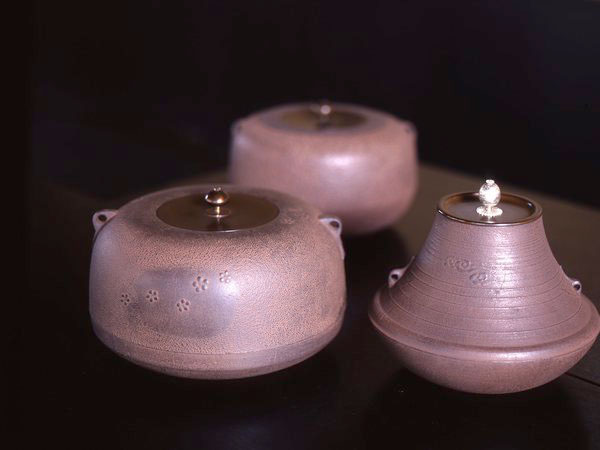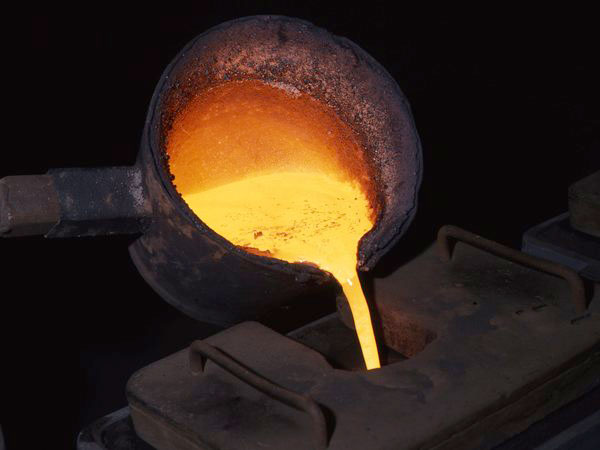
- Metal works
- Yamagata
Yamagata cast iron Yamagata imono
Fine metal castings and time-honored techniques
from over 1000 years ago
Description
What is Yamagata cast iron ?
Yamagata cast iron (called Yamagata imono in Japanese) is produced in the city of Yamagata, Yamagata prefecture. At first, metal fittings, Buddhist statues, and daily use items were made. Then, as skills and techniques were developed, iron kettles and chagama (iron pots used in the tea ceremony) also started being made.
Currently, there are two distinct branches: machinery castings such as agricultural equipment, machine parts, and auto parts and craftwork castings including everyday goods, art objects, and craft products. This craft has the largest market share of tea ceremony teakettles (chagama) in Japan as they are highly acclaimed for both their design and production technology. The industry is also expanding its market overseas. In 1974, Yamagata cast iron was designated as a Japanese traditional craft.
Artisans of this craft utilize centuries-old traditional techniques to create delicate items while still maintaining the solid impression of ironware.
A range of techniques are used to create fine textures such as unique sand mold making, pattern pressing on a sand mold, and surface beating. Tea ceremony and iron pots are made of pure iron, whereas other products also use bronze. Along with the ever-evolving technology, the use of other raw materials has also increased, and in recent years, aluminum castings have been made.
History

The origin of Yamagata cast iron is thought to date back to the late Heian period (794-1185) when the warlord Minamoto no Yoriyoshi was involved in a military campaign to suppress uprisings in the Yamagata region. Metal casters who were in his army entourage found that the sand in the Mamigasaki River (located in present day city of Yamagata) as well as the soil quality of the surrounding area was ideal for making casting molds. Some of these men stayed in the area, and about one hundred eighty years or so later, historical records state that between the years 1336 and 1392, cast iron artisans made metal fittings.
During the Edo period (1603-1868) the cast iron industry fully began to develop. Yoshiaki MOGAMI, the lord of Yamagata Castle, reorganized the castle town, and in order to develop commerce and industry, established two manufacturing towns on the north of the Mamigasaki River, thus laying the foundations for generations of metal casters. Daily use items and Buddhist statues were produced to meet the demand for souvenirs from pilgrims visiting Dewa Sanzan (the Three Sacred Mountains of Dewa). The souvenirs became popular nationwide and helped drive the area's large-scale expansion as a casting production center. In the middle of the Edo period, techniques to make large items such as temple bells or garden lanterns were developed. After the Edo period ended in 1868, metal casting grew into a modern craft industry producing a variety of products including tea ceremony chagama.
Moreover, from the Taisho period (1912-1926) onward, machine component production was developed and took its place alongside traditional craft casting. In 1973, an industrial complex called Imono Town was established in the west of the city, where machine casting is still mainly conducted.
General Production Process

- 1. Mold-making
First, an image of the finished item such as an iron kettle is drawn on a sheet of paper, and a full-scale model is made from wood, resin, or plaster. The accuracy of the model is essential to ensure the quality of the finished piece. Using the model, upper and lower molds are made inside a round frame. The model is rotated to compress the sand and complete the molds. Using sand and clay from Yamagata adds distinctive and delicate texturing on the surface.
- 2. Inscribing patterns and making handle fittings
A space for a hand to go through the loop of the handle is made and embedded in the mold. Next, a spatula-like tool called ezue is used to draw patterns. Designs that will appear on the surface like a bumpy textured pattern called arare (hailstorm), are also inscribed on the mold.
- 3. Making nakago
When an iron kettle is made, a core model is formed from sand, dried naturally, and fired to harden in order to create a hollow inside. Then, the core model is combined with the outer mold. The kettle sides will be as thick as the space between the two molds.
- 4. Pouring molten metal
Red-hot molten metal at about 1300 to 1500℃ (2372 to 2732℉) is transferred to a small melting pot, from which the metal is poured straightaway into the mold. It is important to ensure the temperature of the metal does not get lower as this will affect the quality of the finished product so even highly-skilled artisans with years of experience are extra careful during this step.
- 5. Removing the mold and sand
About ten minutes after the pouring of the metal, a hammer is used to break the mold and to take out the kettle. If the temperature of the kettle is too low, it is difficult to smoothly remove it from the mold so artisans must work quickly before it cools too much. After the kettle has cooled down, it is hit with a hammer to remove any remaining unnecessary parts or leftover pieces of sand on the surface. The artisan uses a range of files to smooth and complete any detailed parts.
- 6. Coloring
A special brush is used to evenly apply repeated coats of lacquer while the piece is baking over a fire. For colored products, teeth blackening liquid made from a combination of iron, rust, and tea is carefully applied to color the piece.
In this way, techniques and skills handed down through the generations by artisans create distinctive, beautiful, and delicate textures that are unique to Yamagata cast iron.
Where to Buy & More Information
Yamagata Bussankan
-
Address
-
Tel.+81-23-688-5500
-
ClosedJanuary 1
-
Business Hours9am to 5:30pm
-
Website
See more Metal works
- Nambu ironware
- Takaoka copperware
- Yamagata cast iron
- Sakai cutlery
- Tokyo silverware
- Echizen cutlery
- Osaka naniwa pewterware
- Tosa cutlery
- Tsubame-tsuiki copperware
- Shinshu Forged Blades
- Banshu-miki cutlery
- Higo inlays
- Echigo-sanjo cutlery
- Echigo-yoita cutlery
- Chiba Artisan Tools
- Tokyo antimony craft































































































































































































































































































